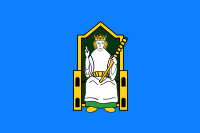Baron Longford Baron Annaly - Feudal Principality Seignory




| Seigneur de la Fief Thomas Blondel, dans l'île norvégienne de Guernesey
Lord of the Fief Thomas Blondel, on the Norse island of Guernsey Feudal Lord - Fief Thomas Blondel, of the Nordic island of Guernsey Feudalherr - Fief Thomas Blondel von der Nordischen Insel Guernsey Herr des Edlen Lehens Th. Blondel von der Nordischen Insel Guernsey Herr des edlen Lehns von Th. Blondel von der nordischen Insel Guernsey Herr der edlen Lehns von Th. Blondel der normannischen Kanalinseln Seigneur des nobles fief de la Th. Blondel des îles normandes Lord of the noble fief of Th. Blondel of the Norman Islands Señor del noble feudo de Th. Blondel de las Islas Norman Lehnsherr von Th. Blondel, Normannische Kanalinseln Lehenherr Feudal Lord Lord Regent Der Oberlehnsherr Translates to suzerain which is a Feudal Lord sovereign - Definition of suzerain. 1 : a superior feudal lord to whom fealty is due : overlord. 2 : a dominant state controlling the foreign relations of a vassal state but allowing it sovereign authority in its internal affairs. Seigneur suzerain Edelherr older than Freiherr (Free Lord) Reichsfreiherr "Barons of the Holy Roman Empire" How to use Freiherr: Hans Freiherr von Schwarz Words for Feudal Lord
Feudal landholders were entitled to style themselves baron if they were nobles; a roturier (commoner) could only
be a seigneur de la baronnie (lord of the barony). https://en.wikipedia.org/wiki/Baron
|
About Longford Pedigree of Longford Annaly Honour of Annaly Longford The Seigneur Lords Paramount Ireland Market & Fair Chief Captain Kings Forces Chief and Captainship of The Annaly Lord Governor of Annaly Prince of Annaly Principality Chief of the Annaly Princes of Longford Feudal Princes of WestMeath Count of the Palatine of Meath A Barony Explained Princes of Annaly Pedigree Sovereign Title Succession Lord of St. Brigit's Longford Abbey Est. 1578 Lord of the Pale Commissioners of the Peace Tenures Abolition Act 1662 - Rights to Sit in Parliament Law of Ireland Seneschal of Meath List of Townlands of Longford Annaly English Pale Kings of Hy Niall Colmanians Court Barons News Irish Kingdoms Lordships of Granard Fishing & Dams Rights Rights of Lords & Barons Datuk Seri Baliwick of Ennerdale Moneylagen Feudal Barons Styles and Dignities Lord Baron Longford Baron de Delvyn Longford Map Lord Baron of Delvin Baron of Temple-Michael Baron of Annaly Kingdom Annaly Lord Conmaicne Baron Annaly Order of Saint Patrick Baron Lerha Granard Baron AbbeyLara Baronies of Longford Princes of Conmhaícne Angaile or Muintir Angaile Baron Lisnanagh or Lissaghanedan Baron Moyashel Moiety of Ardagh Baron Rathline Abbeys of Longford Grants to Delvin Baron Inchcleraun HOLY ISLAND Quaker Island Longoford CO Abbey of All Saints Hereditaments Kingdom of Uí Maine Baron Dungannon Baron Monilagan - Babington Lord Liserdawle Castle Baron Columbkille Kingdom of Breifne or Breny Baron Kilthorne Baron Granarde Count of Killasonna Baron Skryne Baron Cairbre-Gabhra AbbeyShrule Fiefs of the Islands Feudal Westmeath The Island Lords Fief Worship Channel Island History Fief Blondel Fief Blondel Merchandise Events Blondel and King Richard Fief Coin Feudal Guernsey Titles The Feudal System Flag & Arms Castle Site Map Disclaimer Blondel Myth Dictionary Honorable Colonel Mentz Order of St. Columba Valuation of Principality & Barony of Annaly Longford
Feudal Baron of Longford Annaly - Baron Longford Delvin Lord Baron &
Freiherr of Longford Annaly Feudal Barony Principality Count Kingdom of Meath - Feudal Lord of the Fief
Blondel of the Nordic Channel Islands Guernsey Est. 1179 George Mentz
Bio -
George Mentz Noble Title -
George Mentz Ambassador - Order of the Genet
Knighthood Feudalherr - Fief Blondel von der Nordischen
Insel Guernsey Est. 1179 * New York Gazette ®
- Magazine of Wall Street - George
Mentz - George
Mentz - Aspen Commission - Ennerdale - Stoborough - ESG
Commission - Ethnic Lives Matter
- Chartered Financial Manager -
George Mentz
Economist -
George Mentz Ambassador -
George Mentz - George Mentz Celebrity -
George Mentz Speaker - George Mentz Audio Books - George Mentz Courses - George Mentz Celebrity Speaker Wealth
Management -
Counselor George Mentz Esq. - Seigneur Feif Blondel - Lord Baron
Longford Annaly Westmeath
www.BaronLongford.com * www.FiefBlondel.com |




Commissioner George Mentz - George
Mentz Law Professor - George
Mentz Economist
George Mentz News -
George Mentz Illuminati Historian -
George Mentz Net Worth
The Globe and Mail George Mentz
Get Certifications in Finance and Banking to Have Career Growth | AP News